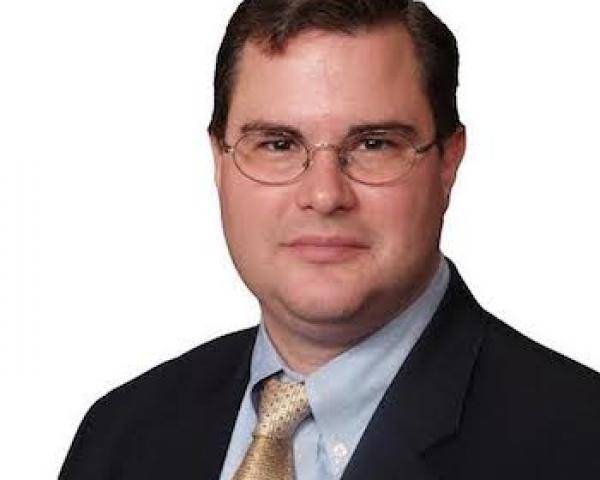The estimated prospective ROE for homeowners this year is 4.5%, down from 6.7% in 2016. There are three key themes to note regarding homeowners insurance in 2017:
Growth
The homeowners' line of business continues to grow; premiums increased to $91 billion in 2016 from $89 billion in 2015. The rate of growth has slowed from prior years, and slower growth is expected in the near future with less aggressive but positive rate change in the pipeline. Further, catastrophe losses are rising faster than inflation, and coverage gaps continue in perils (like floods), suggesting opportunities exist for carriers to find premium through coverage innovations.
Divergent Markets
From the macroscopic perspective of this study, there are at least three different homeowners markets:
1. Florida, a market unto itself.
Eight of Florida's 10 largest carriers have limited name recognition outside the Florida market, though several are expanding to other coastal states. Remove Florida and US ROE increases to 9.1%, suggesting the assumptions of this study (nationwide carrier with A.M. Best “A” rating) differ from market reality in the sunshine state.
2. The hurricane-exposed coast, excluding Florida.
Hurricane coast states posted an ROE of 6.7% in this year’s study. At present, these states are characterized by heavy regulation; strong competition between established brands vs. younger carriers; and sophisticated risk differentiation based on granular catastrophe-savvy rating plans.
3. Everybody else.
The remainder of the U.S. owns a respectable 12.2% ROE with market share largely dominated by big-name national and super-regional brands. Regulatory considerations are easier to navigate than in coastal states. Catastrophe risk has unique challenges associated with less robust models for thunderstorm, wildfire and flash flood risks as compared to hurricane risks. California and Washington are unique because of their strict regulatory environment, but they otherwise resemble the other states in the cohort in terms of perils and players of note in part because earthquake endorsements are not required for home loans, show limited take-up and are ultimately excluded from this analysis because they roll up to the earthquake annual statement line.
Technology
This year’s study examines “one dollar of homeowners premium,” which highlights 8 cents of loss adjustment and 21 cents of policy acquisition costs (12 cents for commissions and brokerage plus 9 cents for other acquisition costs). These areas of the value chain are coming under attack from insurtech startups eager to test established carriers’ ability to adapt rapidly evolving technology. Aon’s Digital Monitor currently tracks over 40 startups, backed by nearly $2 billion in venture capital, that are attacking these areas of the property and casualty value chain (not all in homeowners, specifically). Mobile and software-as-a-service platforms, drone and satellite imagery and proprietary catastrophe-detection internet-of-things-enabled hardware promise to continue to apply pressure to traditional homeowners carriers’ approach to the business of insurance.
ROE study methodology

The basis of the prospective ROE estimate is industry, state and aggregate statutory filing data including reported direct losses, expenses, payout pattern and investment yields. We replace actual historical catastrophe losses as measured by property claims services with a multi-model view of expected catastrophe loss. On-leveling of direct premiums to current rates uses rate filings of the top 20 insurance company groups by state. Finally, estimated capital requirements and reinsurance costs consider a nationwide-personal-lines-company writing both home and auto business at a capitalization level consistent with an A.M. Best “A” rating. The ROE estimates exclude earthquake shake losses; the premium and losses for that coverage are recorded on a separate statutory line of business.
See also: 10 Trends on Big Data, Advanced Analytics
The diversification available to a nationwide personal lines insurer impacts the ROE calculation. For instance, homeowners business in California diversifies Gulf and East Coast hurricane exposure for a nationwide insurer. A California standalone would incur higher capital and reinsurance costs than the California portion of a nationwide insurer with similar premium volume in the state. Similar results are to be expected for any other regional or single state insurer.
The normalization of catastrophe by this study replaces the local impacts from large events — like Harvey, Irma or the first and second quarter hail and wind losses experienced in 2017 — with the modeled catastrophe average annual loss. The prospective impact to the line from these events remains to be seen, and future versions of this study may attempt to measure impacts to rate level and reinsurance pricing.
The 2017 nationwide ROE estimate of 4.5% falls below our 2016 estimate of 6.7%. Profitability challenges to the line include: (1) a slowdown of rate increases (and decreases by some major carriers) that failed to pace loss and expense inflation, and (2) premium and exposure growth that pushed up the A.M. Best capital requirements to maintain the assumed “A” rating. Declining costs of reinsurance to capitalize the volatility inherent in the homeowners line were insufficient to offset the increased capital charges. Softening reinsurance costs cumulatively added over 210 bps of ROE in our study since 2013; after the catastrophe losses of 2017, the reinsurance and capital markets will be closely watched for pricing signals.

The maps above and below show, in loss ratio points, the amount that catastrophe experience exceeds model average annual loss. Adjusting combined ratios for expected versus historical catastrophe loss is an important step to distinguish weather-related randomness from inadequately priced business. Historical catastrophes can distort measures of results at a state level, causing the noise to overwhelm the signal. While state level adjustments can be significant, the 10-year nationwide experience catastrophe loss ratio of 13 points is meaningfully lower than the modeled expected catastrophe loss ratio of 23%. 2016 ended the dearth of hurricane activity that was the boon of gulf coast carriers for nearly 10 years. The Gulf states plus Florida had 30 points of favorable results relative to expected from 2007 through 2016, and, as of the time of this publication (even with Harvey and Irma), that favorable experience is more than 24 points of performance lift.

The five year retrospective comparing catastrophe experience to modeled expectation is favorable for much of the country. States on the eastern slopes of the Rockies into the plains (including Colorado, Nebraska and Montana) experienced pain primarily from hail-driven losses in several of the last five years. Texas is an interesting case study because the lull in hurricane activity drives overall favorable experience overwhelming thunderstorm losses that contributed to a five-point drag on the loss ratio. The five-year averages reflect the period from 2012 to 2016. Across the country, the first two quarters of 2017 experienced the highest thunderstorm-loss levels since 2011, and the third quarter included multiple major landfalling hurricanes. Taken together, this should partially erode the favorable experience of the previous five years.

The percentages in the map above show the direct target combined ratios necessary to fund reinsurance costs and allocated capital for retained risk by state, including catastrophe and non-catastrophe risk. The targets are for a sample of nationwide companies only and will vary among individual companies because of state distribution of premiums, capital adequacy standards, target return on capital, allocation methodologies, reinsurance and other considerations. For a diversified insurer with a footprint similar to the industry, the target combined ratios fall into three main categories: (1) Florida, (2) other hurricane exposed states and (3) states not materially exposed to hurricanes.

The map above shows average approved rate changes filed between January 2016 and August 2017 for the top 20 homeowners groups by state that made a filing in the period. Rate activity, while still positive, continues the slowdown observed in last year’s study. Notable decreases came from at least one large industry carrier, suggesting potential divergence in pricing levels that the averages fail to reflect. Rate changes on the coast, including Florida and Texas, ticked up significantly versus observations from last year. For Florida, in particular, rate activity was likely insufficient to on-level for assignment of benefits and claims adjustment issues facing the state’s carriers.
See also: How to Drive More Quotes

Homeowners as a growth engine continues to be the headline for the insurance industry through 2016; the line has outpaced GDP and most other underwriting segments since 2010. Direct written premiums increased from $71 billion in 2010 to $91 billion in 2016, with a projected $93 billion for 2017 given prospective rate activity.
A strong component of growth through 2015 was the emphasis on rate adequacy with indicated rate levels increasing over 30% since 2010. Policyholders changing carriers will prevent the industry from realizing the full aggregate benefit of the individual carriers’ rate actions.
The “S” shape of the rate change curve suggests the line should be watched carefully. The rate activity through 2015 is now fully earned, and rates since 2015 show more modest increases. Time will tell if rate increases around 2% will be sufficient to track loss and expense inflationary pressures.

Our study suggests that, at prospective 2018 rates and before income taxes, insurers keep slightly more than four cents of profit for every premium dollar they earn. The four cents of direct profit is shared between the primary carrier, reinsurance partners and the U.S. Treasury.
The full report is available here. The basis of the prospective ROE estimate is industry, state and aggregate statutory filing data including reported direct losses, expenses, payout pattern and investment yields. We replace actual historical catastrophe losses as measured by property claims services with a multi-model view of expected catastrophe loss. On-leveling of direct premiums to current rates uses rate filings of the top 20 insurance company groups by state. Finally, estimated capital requirements and reinsurance costs consider a nationwide-personal-lines-company writing both home and auto business at a capitalization level consistent with an A.M. Best “A” rating. The ROE estimates exclude earthquake shake losses; the premium and losses for that coverage are recorded on a separate statutory line of business.
See also: 10 Trends on Big Data, Advanced Analytics
The diversification available to a nationwide personal lines insurer impacts the ROE calculation. For instance, homeowners business in California diversifies Gulf and East Coast hurricane exposure for a nationwide insurer. A California standalone would incur higher capital and reinsurance costs than the California portion of a nationwide insurer with similar premium volume in the state. Similar results are to be expected for any other regional or single state insurer.
The normalization of catastrophe by this study replaces the local impacts from large events — like Harvey, Irma or the first and second quarter hail and wind losses experienced in 2017 — with the modeled catastrophe average annual loss. The prospective impact to the line from these events remains to be seen, and future versions of this study may attempt to measure impacts to rate level and reinsurance pricing.
The 2017 nationwide ROE estimate of 4.5% falls below our 2016 estimate of 6.7%. Profitability challenges to the line include: (1) a slowdown of rate increases (and decreases by some major carriers) that failed to pace loss and expense inflation, and (2) premium and exposure growth that pushed up the A.M. Best capital requirements to maintain the assumed “A” rating. Declining costs of reinsurance to capitalize the volatility inherent in the homeowners line were insufficient to offset the increased capital charges. Softening reinsurance costs cumulatively added over 210 bps of ROE in our study since 2013; after the catastrophe losses of 2017, the reinsurance and capital markets will be closely watched for pricing signals.
The basis of the prospective ROE estimate is industry, state and aggregate statutory filing data including reported direct losses, expenses, payout pattern and investment yields. We replace actual historical catastrophe losses as measured by property claims services with a multi-model view of expected catastrophe loss. On-leveling of direct premiums to current rates uses rate filings of the top 20 insurance company groups by state. Finally, estimated capital requirements and reinsurance costs consider a nationwide-personal-lines-company writing both home and auto business at a capitalization level consistent with an A.M. Best “A” rating. The ROE estimates exclude earthquake shake losses; the premium and losses for that coverage are recorded on a separate statutory line of business.
See also: 10 Trends on Big Data, Advanced Analytics
The diversification available to a nationwide personal lines insurer impacts the ROE calculation. For instance, homeowners business in California diversifies Gulf and East Coast hurricane exposure for a nationwide insurer. A California standalone would incur higher capital and reinsurance costs than the California portion of a nationwide insurer with similar premium volume in the state. Similar results are to be expected for any other regional or single state insurer.
The normalization of catastrophe by this study replaces the local impacts from large events — like Harvey, Irma or the first and second quarter hail and wind losses experienced in 2017 — with the modeled catastrophe average annual loss. The prospective impact to the line from these events remains to be seen, and future versions of this study may attempt to measure impacts to rate level and reinsurance pricing.
The 2017 nationwide ROE estimate of 4.5% falls below our 2016 estimate of 6.7%. Profitability challenges to the line include: (1) a slowdown of rate increases (and decreases by some major carriers) that failed to pace loss and expense inflation, and (2) premium and exposure growth that pushed up the A.M. Best capital requirements to maintain the assumed “A” rating. Declining costs of reinsurance to capitalize the volatility inherent in the homeowners line were insufficient to offset the increased capital charges. Softening reinsurance costs cumulatively added over 210 bps of ROE in our study since 2013; after the catastrophe losses of 2017, the reinsurance and capital markets will be closely watched for pricing signals.
 The maps above and below show, in loss ratio points, the amount that catastrophe experience exceeds model average annual loss. Adjusting combined ratios for expected versus historical catastrophe loss is an important step to distinguish weather-related randomness from inadequately priced business. Historical catastrophes can distort measures of results at a state level, causing the noise to overwhelm the signal. While state level adjustments can be significant, the 10-year nationwide experience catastrophe loss ratio of 13 points is meaningfully lower than the modeled expected catastrophe loss ratio of 23%. 2016 ended the dearth of hurricane activity that was the boon of gulf coast carriers for nearly 10 years. The Gulf states plus Florida had 30 points of favorable results relative to expected from 2007 through 2016, and, as of the time of this publication (even with Harvey and Irma), that favorable experience is more than 24 points of performance lift.
The maps above and below show, in loss ratio points, the amount that catastrophe experience exceeds model average annual loss. Adjusting combined ratios for expected versus historical catastrophe loss is an important step to distinguish weather-related randomness from inadequately priced business. Historical catastrophes can distort measures of results at a state level, causing the noise to overwhelm the signal. While state level adjustments can be significant, the 10-year nationwide experience catastrophe loss ratio of 13 points is meaningfully lower than the modeled expected catastrophe loss ratio of 23%. 2016 ended the dearth of hurricane activity that was the boon of gulf coast carriers for nearly 10 years. The Gulf states plus Florida had 30 points of favorable results relative to expected from 2007 through 2016, and, as of the time of this publication (even with Harvey and Irma), that favorable experience is more than 24 points of performance lift.
 The five year retrospective comparing catastrophe experience to modeled expectation is favorable for much of the country. States on the eastern slopes of the Rockies into the plains (including Colorado, Nebraska and Montana) experienced pain primarily from hail-driven losses in several of the last five years. Texas is an interesting case study because the lull in hurricane activity drives overall favorable experience overwhelming thunderstorm losses that contributed to a five-point drag on the loss ratio. The five-year averages reflect the period from 2012 to 2016. Across the country, the first two quarters of 2017 experienced the highest thunderstorm-loss levels since 2011, and the third quarter included multiple major landfalling hurricanes. Taken together, this should partially erode the favorable experience of the previous five years.
The five year retrospective comparing catastrophe experience to modeled expectation is favorable for much of the country. States on the eastern slopes of the Rockies into the plains (including Colorado, Nebraska and Montana) experienced pain primarily from hail-driven losses in several of the last five years. Texas is an interesting case study because the lull in hurricane activity drives overall favorable experience overwhelming thunderstorm losses that contributed to a five-point drag on the loss ratio. The five-year averages reflect the period from 2012 to 2016. Across the country, the first two quarters of 2017 experienced the highest thunderstorm-loss levels since 2011, and the third quarter included multiple major landfalling hurricanes. Taken together, this should partially erode the favorable experience of the previous five years.
 The percentages in the map above show the direct target combined ratios necessary to fund reinsurance costs and allocated capital for retained risk by state, including catastrophe and non-catastrophe risk. The targets are for a sample of nationwide companies only and will vary among individual companies because of state distribution of premiums, capital adequacy standards, target return on capital, allocation methodologies, reinsurance and other considerations. For a diversified insurer with a footprint similar to the industry, the target combined ratios fall into three main categories: (1) Florida, (2) other hurricane exposed states and (3) states not materially exposed to hurricanes.
The percentages in the map above show the direct target combined ratios necessary to fund reinsurance costs and allocated capital for retained risk by state, including catastrophe and non-catastrophe risk. The targets are for a sample of nationwide companies only and will vary among individual companies because of state distribution of premiums, capital adequacy standards, target return on capital, allocation methodologies, reinsurance and other considerations. For a diversified insurer with a footprint similar to the industry, the target combined ratios fall into three main categories: (1) Florida, (2) other hurricane exposed states and (3) states not materially exposed to hurricanes.
 The map above shows average approved rate changes filed between January 2016 and August 2017 for the top 20 homeowners groups by state that made a filing in the period. Rate activity, while still positive, continues the slowdown observed in last year’s study. Notable decreases came from at least one large industry carrier, suggesting potential divergence in pricing levels that the averages fail to reflect. Rate changes on the coast, including Florida and Texas, ticked up significantly versus observations from last year. For Florida, in particular, rate activity was likely insufficient to on-level for assignment of benefits and claims adjustment issues facing the state’s carriers.
See also: How to Drive More Quotes
The map above shows average approved rate changes filed between January 2016 and August 2017 for the top 20 homeowners groups by state that made a filing in the period. Rate activity, while still positive, continues the slowdown observed in last year’s study. Notable decreases came from at least one large industry carrier, suggesting potential divergence in pricing levels that the averages fail to reflect. Rate changes on the coast, including Florida and Texas, ticked up significantly versus observations from last year. For Florida, in particular, rate activity was likely insufficient to on-level for assignment of benefits and claims adjustment issues facing the state’s carriers.
See also: How to Drive More Quotes
 Homeowners as a growth engine continues to be the headline for the insurance industry through 2016; the line has outpaced GDP and most other underwriting segments since 2010. Direct written premiums increased from $71 billion in 2010 to $91 billion in 2016, with a projected $93 billion for 2017 given prospective rate activity.
A strong component of growth through 2015 was the emphasis on rate adequacy with indicated rate levels increasing over 30% since 2010. Policyholders changing carriers will prevent the industry from realizing the full aggregate benefit of the individual carriers’ rate actions.
The “S” shape of the rate change curve suggests the line should be watched carefully. The rate activity through 2015 is now fully earned, and rates since 2015 show more modest increases. Time will tell if rate increases around 2% will be sufficient to track loss and expense inflationary pressures.
Homeowners as a growth engine continues to be the headline for the insurance industry through 2016; the line has outpaced GDP and most other underwriting segments since 2010. Direct written premiums increased from $71 billion in 2010 to $91 billion in 2016, with a projected $93 billion for 2017 given prospective rate activity.
A strong component of growth through 2015 was the emphasis on rate adequacy with indicated rate levels increasing over 30% since 2010. Policyholders changing carriers will prevent the industry from realizing the full aggregate benefit of the individual carriers’ rate actions.
The “S” shape of the rate change curve suggests the line should be watched carefully. The rate activity through 2015 is now fully earned, and rates since 2015 show more modest increases. Time will tell if rate increases around 2% will be sufficient to track loss and expense inflationary pressures.
 Our study suggests that, at prospective 2018 rates and before income taxes, insurers keep slightly more than four cents of profit for every premium dollar they earn. The four cents of direct profit is shared between the primary carrier, reinsurance partners and the U.S. Treasury.
The full report is available here.
Our study suggests that, at prospective 2018 rates and before income taxes, insurers keep slightly more than four cents of profit for every premium dollar they earn. The four cents of direct profit is shared between the primary carrier, reinsurance partners and the U.S. Treasury.
The full report is available here.





